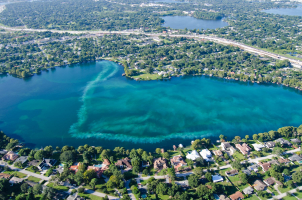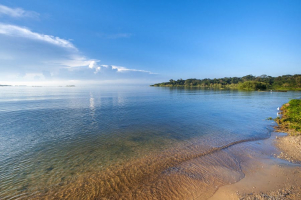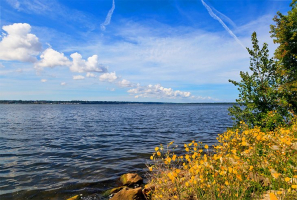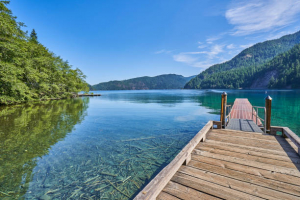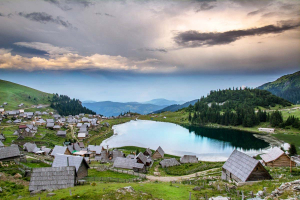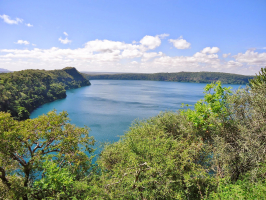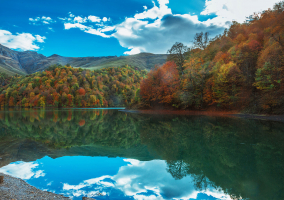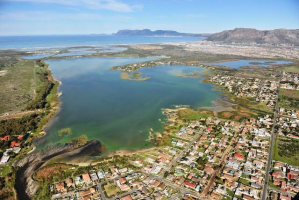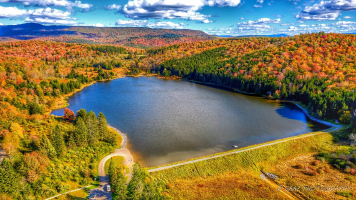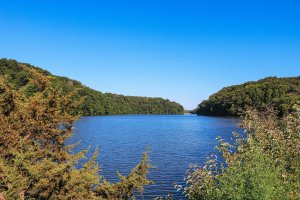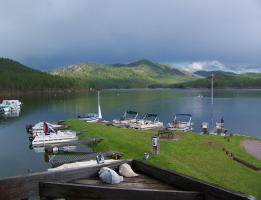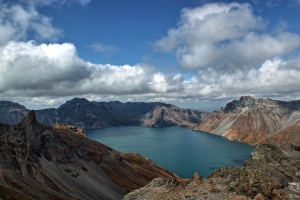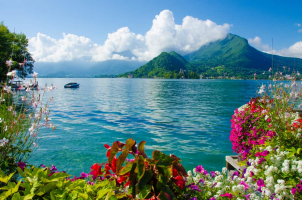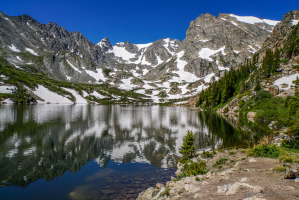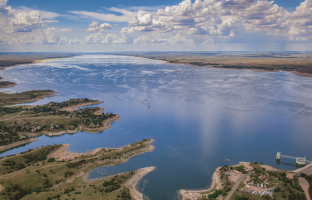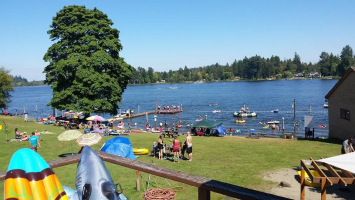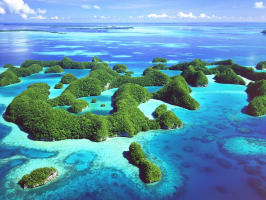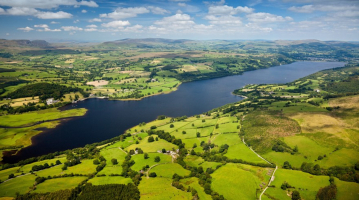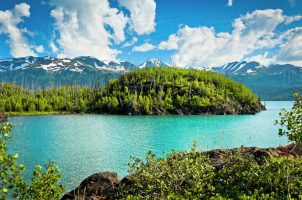Top 5 Best Lakes to Visit in the Dominican Republic
A dip in a cold river, near or far from the beach, is a favorite activity for tourists of the Dominican Republic's culture. Locals enjoy swimming in freshwater ... read more...rivers, cooking along the coast, and resting in the shade. This place has very interesting and special activities, attracting a large number of tourists and indigenous people to participate. Soaking rivers are ideal in the summer when temperatures are at their highest, they can be enjoyed year-round, while the lakes are ideal for bird watching. Check out the list of best lakes to visit in the Dominican Republic to discover more attractive destinations in this country.
-
Lago Enriquillo is a beautiful, hot and magical spot in the southwest of the Dominican Republic. It is the largest and most watery lake in the Caribbean and one of the best lakes to visit in the Dominican Republic. Lake water can reach hypersaline levels up to 66% higher than seawater. It was formerly known as Lake Xaragua (Jaragua) after the name of the Taino domain in which it was located. The lake was formed 10 million years ago when the north island, which is the area towards the Sierra the Neiba and the south island, including the Sierra del Bahoruco, le Massif de la Selle, and the Tiburon peninsula in present-day Haiti - combined with shifting Earth's movements form the island of Hispaniola. Although arid and inhospitable, the area is rich in wildlife. Among the animals: are American flamingos, 61 other birds, three species of fish, and alligators. The Ricord iguana and rhinoceros are endemic species. The iguanas are most welcome to all residents of the area.
Covering an area of more than 350 square kilometers, Lago Enriquillo is the largest lake in the Caribbean, and also the only body of water in the region that lies more than 43 meters below sea level. Named after Enriquillo, the first Taino chief who successfully rebelled against the Spanish colonists, the lake and surrounding lands are ideal for wildlife viewing and nature exploration. Boat trips along the lake's surface and up Isla Cabritos - sitting in the middle of this unique body of water - reveal a large population of American alligators that you can see up close, as well as the flamingos at Boca de Cachón, and many other species of birds. Iguanas guard the entrance to the lake, and the surrounding land consists of tropical and dry forests, springs–La Azufrada–and arable land.
- Location: Hoya de Enriquillo, Dominican Republic
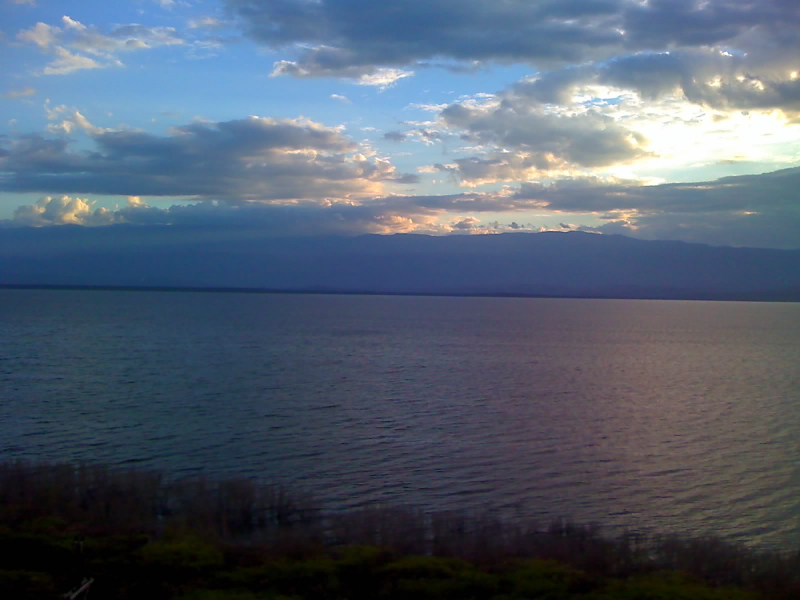
Source: Juan Alberto Silver via Wikimedia Commons 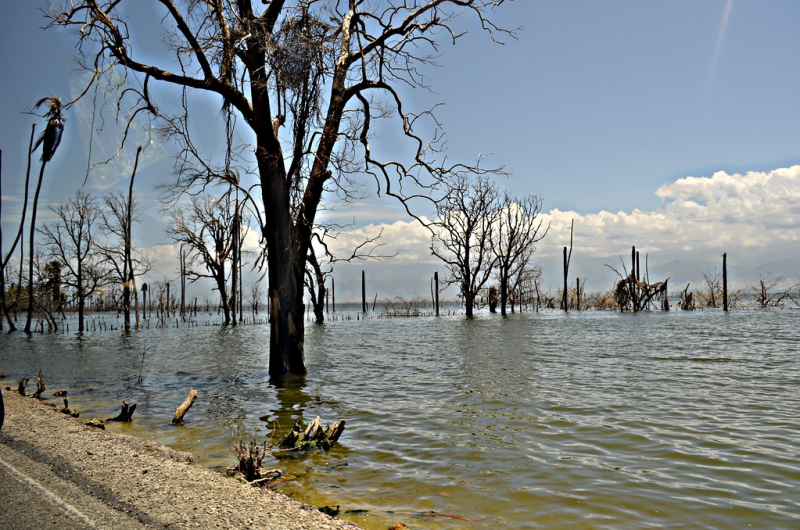
Source: Flickr -
Laguna de Oviedo (Oviedo Lagoon) is located inside Jaragua National Park. This is a 27 square kilometer, 1.5-meter-deep wetland of very salty water that, together with Eagles Bay, forms one of the park's main ecotourism attractions. It is home to 60 species of aquatic birds, crabs, iguanas, herons, flamingos, and seagulls. This animal transforms the park into a beautiful natural landscape full of life and color. It is also home to endangered species such as solenodon and hutia, and to 11 different species of bats. The area's most notable animals are the rhinoceros salamander and the Ricord salamander, both endemic and endangered. The Oviedo Lagoon also has 24 islets, also known as bays, where a large number of animals live.
As the largest lagoon in the country, with salt water three times higher than sea level, Laguna de Oviedo is a prime bird-watching area. Around the lagoon's thick mangrove swamp and its 24 keys more than 10 kilometers long, visitors will spot royal herons and blue herons, great storks, seagulls, pink spoonbills, and birds, pelicans, Beautiful American parrots, and flamingos. Tours from 1 to 3 hours to Laguna de Oviedo and the surrounding area can be booked through the information center of the Ministry of the Environment, located near the main road in Oviedo. Because of the intense heat, the best time to see wildlife in and around the lake is early in the morning. Laguna de Oviedo became one of the best lakes to visit in the Dominican Republic.
- Location: Jaragua National Park, Pedernales Province
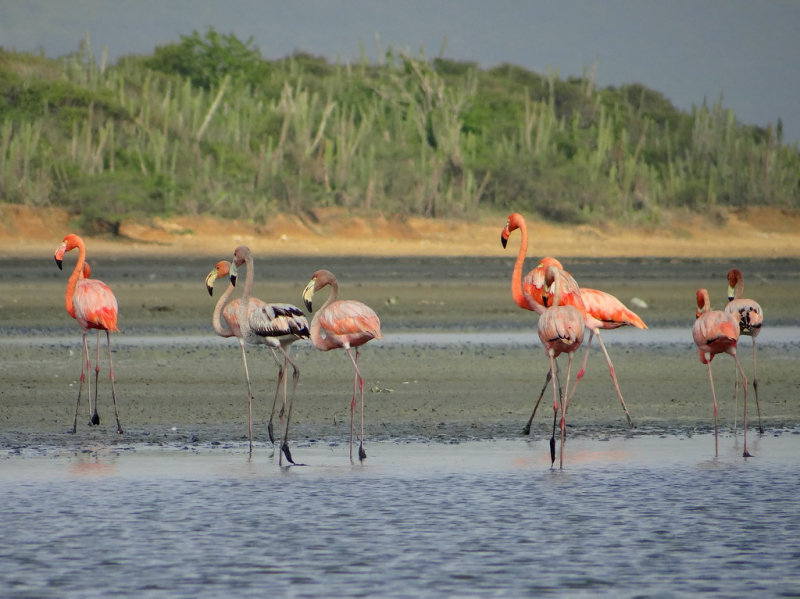
Source: Flickr 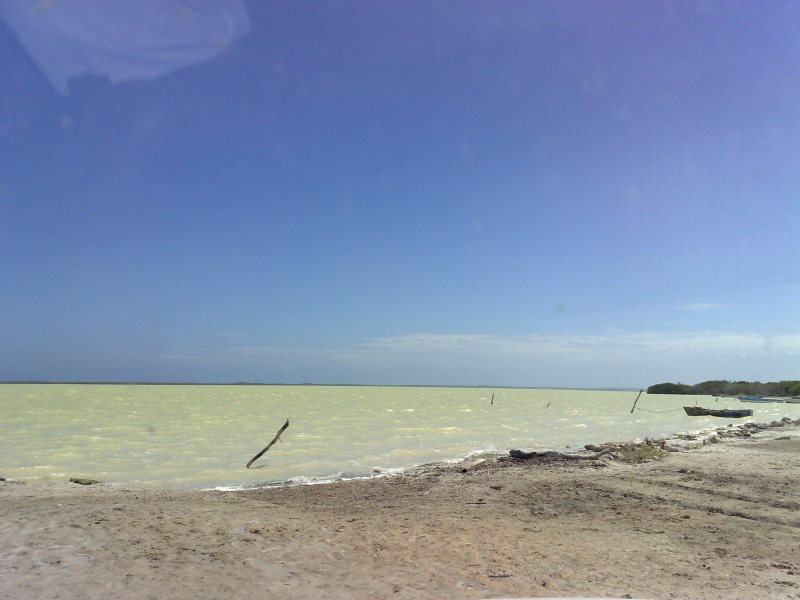
Source: Scmjht via Wikimedia Commons -
Laguna Dudú is an interesting and mostly unknown paradise located on the northeast coast of the Dominican Republic. It is surrounded by natural cliffs, from which visitors can swim, snorkel, or free-diving in the refreshingly clear waters. This is not only one of the best lakes to visit in the Dominican Republic, but also a place worth visiting as it offers a cave to explore, a beautiful cove with other challenging experiences. There are stairs leading down to the water to help walk to both lagoons conveniently and easily. This place is so natural to explore and has many photo spots. A visit to Laguna Dudú can easily be combined with two additional beach activities as the place is located between the two amusement parks (beach) Diamante and Arroyo Salado.
One of the most beautiful natural attractions on the north coast, Laguna Dudú's series of turquoise freshwater lagoons surrounded by caves and lush forests will keep you swimming all day long. Located in Cabrera, about a two-hour drive east of Puerto Plata and an hour from Playa Grande, the park offers a variety of outdoor recreation. Swim or rent a kayak to navigate the waters, explore one of the caves on foot, or venture out on your own for a makeshift zipline that plunges visitors about 10 meters into the deepest lagoon. There's an on-site restaurant and bar, and plenty of green space to relax all day long.
- Location: Northeast coast of the Dominican Republic
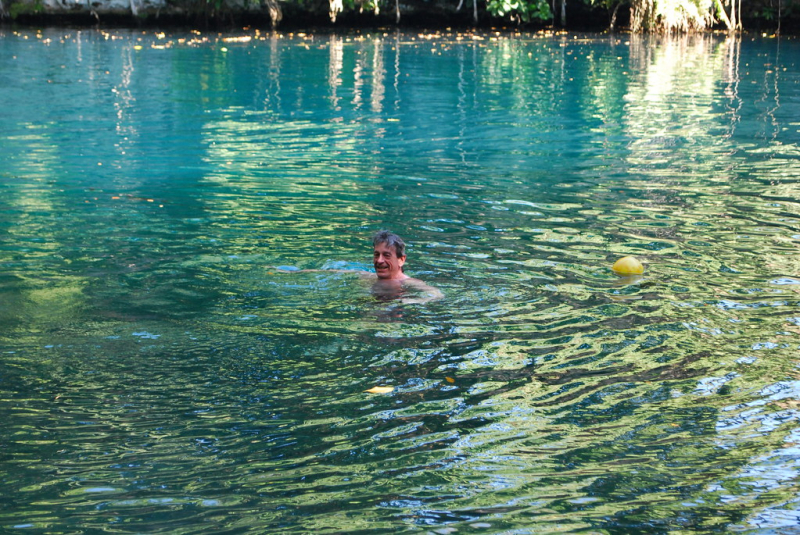
Source: Flickr 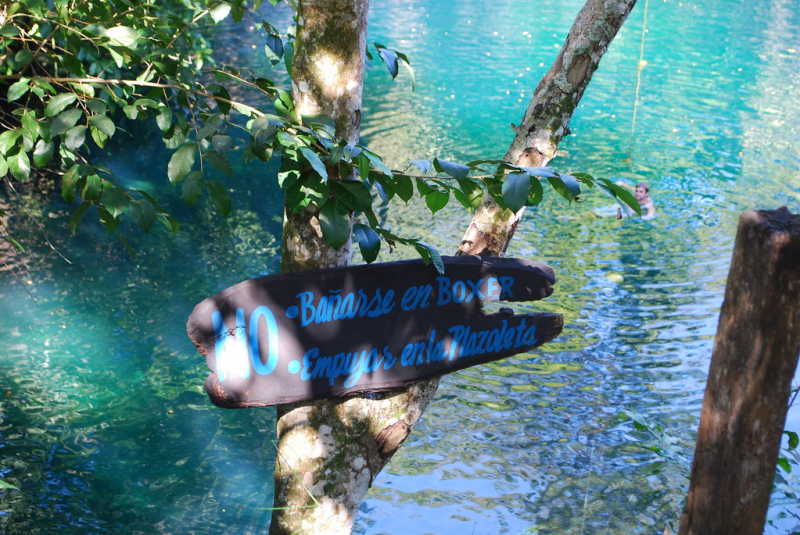
Source: Flickr -
Located in the fishing village of Río San Juan, about 100 kilometers east of Puerto Plata, Laguna Gri-Gri is one of the country's major bird sanctuaries, set along a peaceful lagoon flanked by forests. A boat ride will take you along this mystical lagoon at any time of the day, although sunset is the best time to see storks, and vultures soar and sing loudly over the flooded forest salty as you make your way through the narrow canals, which eventually lead to the sea. Daily guided boat tours of the lagoon include a stop at Cueva de Las Golondrinas (Swallow's Cave), which faces a turquoise cove where you can swim, and ends at Playa Caletón magical to enjoy one of the bliss of Río San Juan beaches.
Laguna Gri-Gri has not only become one of the best lakes to visit in the Dominican Republic but is also known as a paradise for nature lovers and tropical birdwatchers. It gets its name from the abundant presence of Gri-Gri trees in the area. The dense mangrove forest that surrounds and separates it from the beaches of Corpses and Los Minos is home to the Bird Sanctuary, home to thousands of species of birds. Before 1958, the lagoon was just a natural spring connected to the sea through a stream, but after an earthquake, groundwater emerged and the Gri-Gri lagoon was created. Sightseeing tours lead visitors through a natural canal to the sea, to Caletón Beach is one of the interesting activities in this place. During the walk, you can bathe in the pond and visit the swallow's cave, where thousands of swiftlets nest each year. These tours are conducted on a boat, some of them with crystal decks that allow people to admire each of the wonders this sea has to offer.
- Location: Río San Juan, Dominican Republic
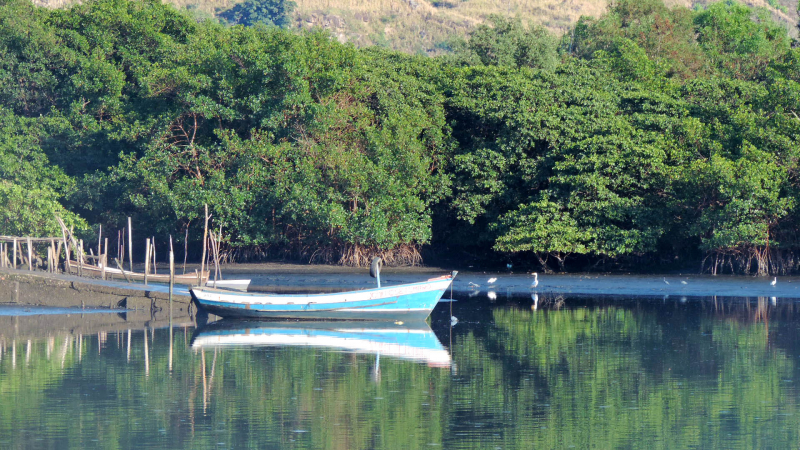
Source: Wikimedia Commons 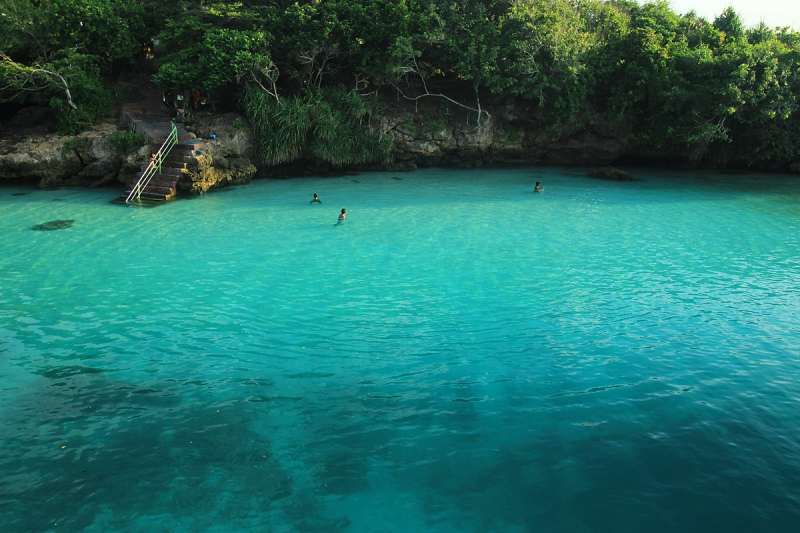
Source: Wikimedia Commons -
Laguna Rincón, also known as Laguna de Cabral, is the largest freshwater lagoon in the country, with a wide variety of flora and fauna, so it is a protected scientific reserve. Thriving in and around the lagoon as well as the surrounding subtropical and mangrove forests are freshwater turtles, iguanas, and more than 50 species of birds, including flamingos, pelicans, herons, and Florida ducks. The fishes are roncador, Bosu, or macho, Chinese old lady, Dominican granny, fireman, etc., and among the birds are water hen, flamingo, duck, heron, etc. Located in the eastern part of the Neiba Valley, between the communities of Cabral, Peñón, Cristóbal, and La Lista, in the provinces of Barahona and Independencia. This area is about 20 km from the coast. It includes the Cabral or Rincón lagoons and the surrounding wetlands.
At Laguna Rincón, the total area of the shelter is 65 km² and 44% of the area is covered by a lagoon. Suitable for bird watching, need to do by local bale boat. The Cabral Lagoon or Rincón is the second-largest inland water body and the largest freshwater body in the Dominican Republic. It has been a source of income for the municipality of Cabral and surrounding towns such as El Peñón, Fundación, or Cristóbal Municipality, which is something of a marvel since, in addition to being a tourist attraction, it is also a source of income for local people. Therefore, Laguna Rincón deserves to become an indispensable name in the list of best lakes to visit in the Dominican Republic.
- Location: East of the Neiba Valley, Dominican Republic
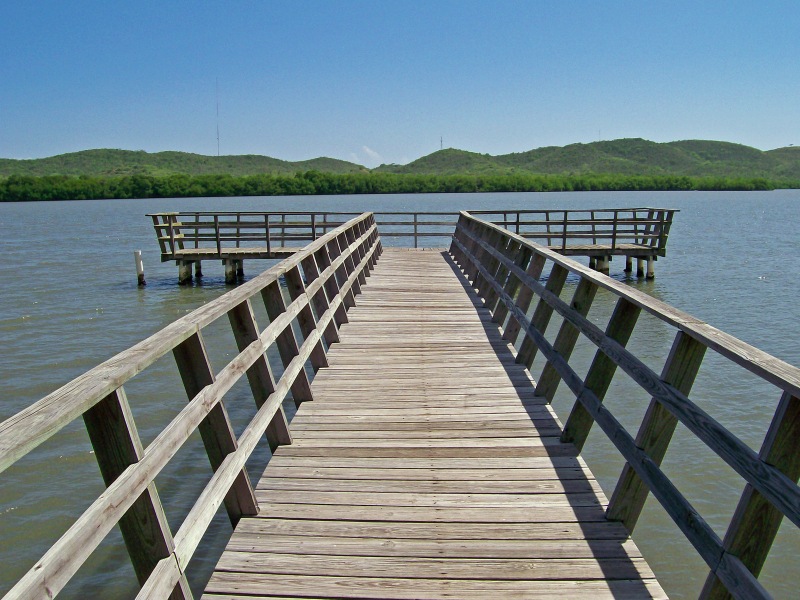
Source: Wikimedia Commons 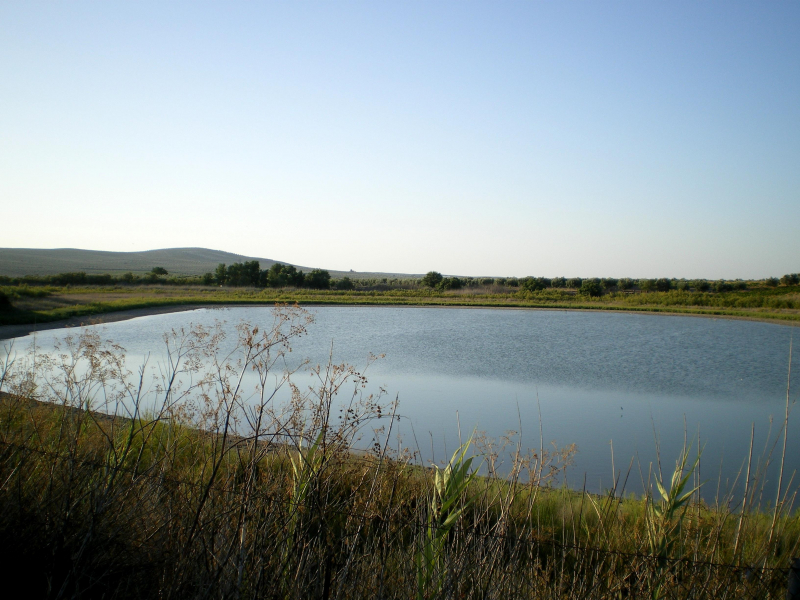
Source: Wikimedia Commons







